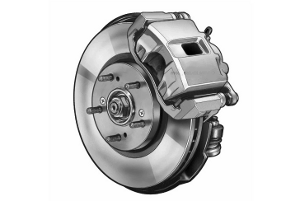MULTIPOINT FUEL INJECTION
Multi point fuel injection is a system wherein fuel is injected into individual cylinders based on commands from "on board engine management system computer"-popularly known as Engine control unit.ECU receives feed back from several sensors like engine speed sensor, fly wheel position sensor, vehicle speed sensor, atmospheric temp. sensor, accelerator pedal position sensor intake airflow sensor. Then ECU control the correct amount of fuel to be injected and the proper time at which the fuel will be injected at any speed and load condition. This ensure maximum power output at minimum fuel.
MPFI systems are of three types, first is BATCHED in which fuel is injected to the cylinders in groups, without precisely bringing together to any particular cylinder’s intake stroke, the second one is simultaneous in which fuel is injected at the same time to all the cylinders and the third one is sequential in which injection is timed to coincide with each cylinder’s intake stroke.
ADVANTAGES OF MPFI
- More uniform air-fuel mixture will be supplied to each cylinder, hence the difference in power developed in each cylinder is minimum.
- The vibrations produced in MPFI engines is very less, due to this life of the engine component is increased.
- No need to crank the engine twice or thrice in case of cold starting as happen in the carburetor system.
- Immediate response, in case of sudden acceleration and deceleration.
- The mileage of the vehicle is improved.
- More accurate amount of air-fuel mixture will be supplied in these injection system. As a result complete combustion will take place. This leads to effective utilization of fuel supplied and hence low emission level.











%252BSTEERING%252BWORKS.jpg&container=blogger&gadget=a&rewriteMime=image%2F*)








